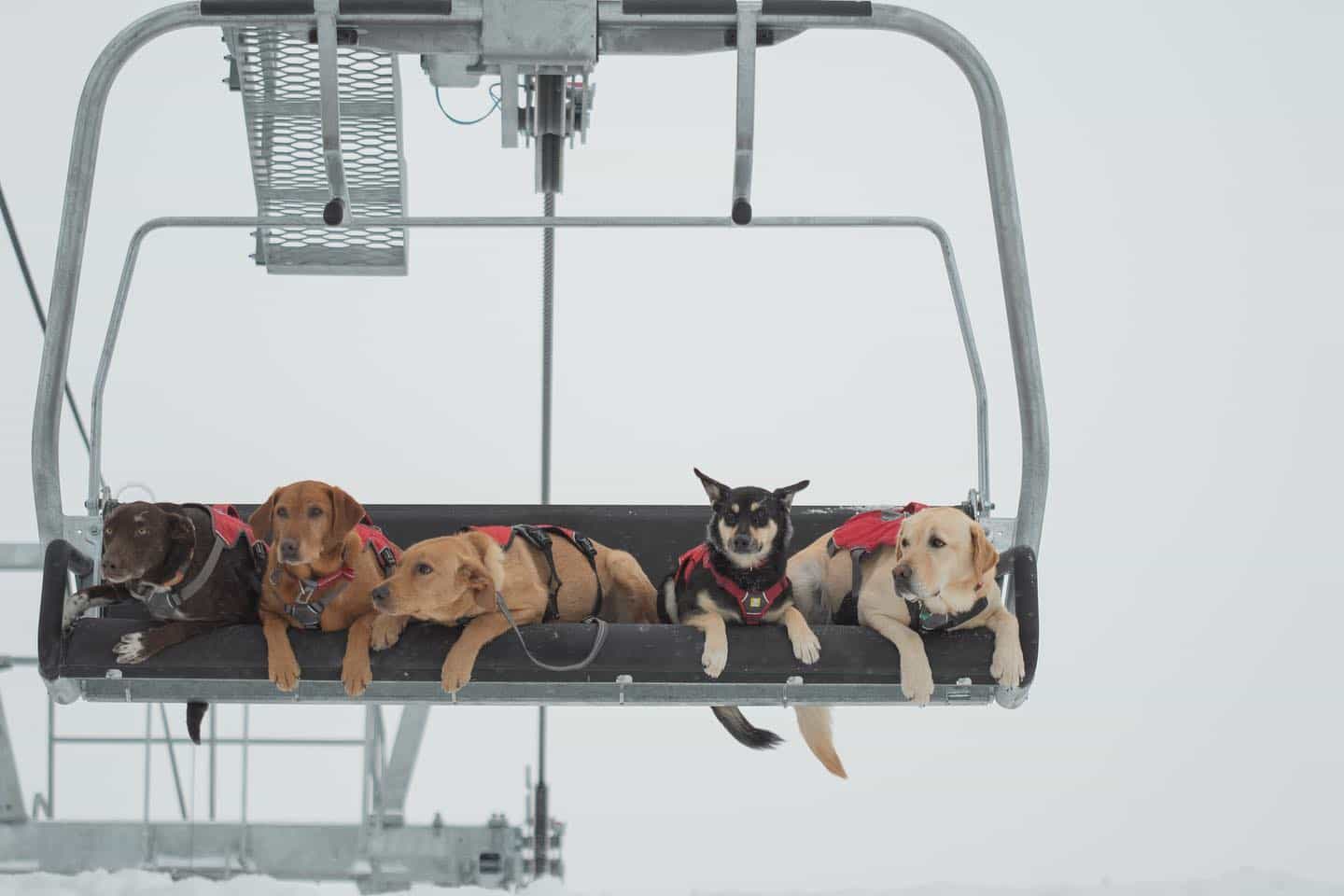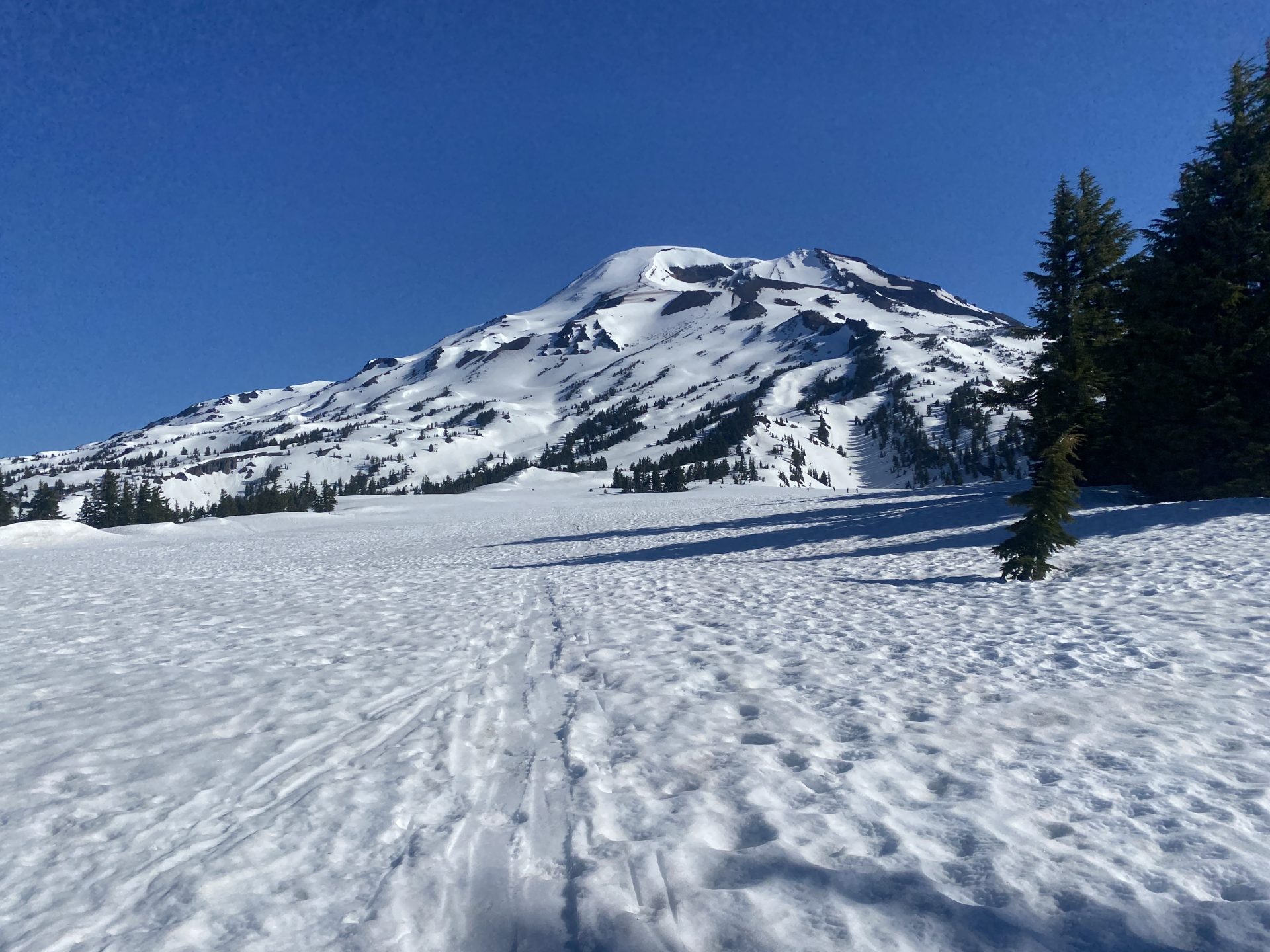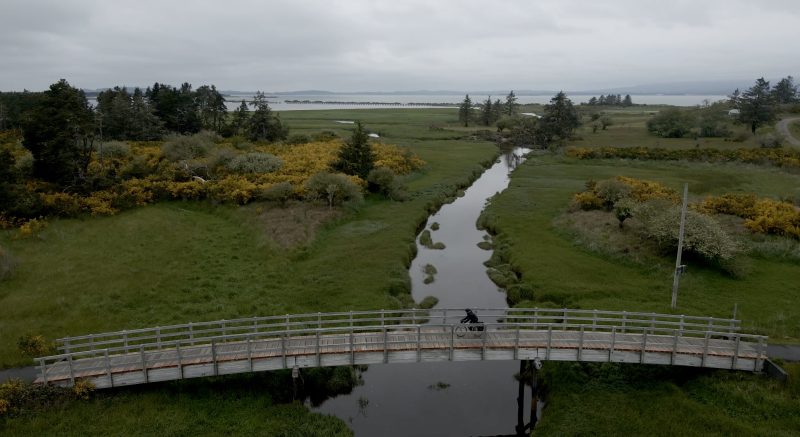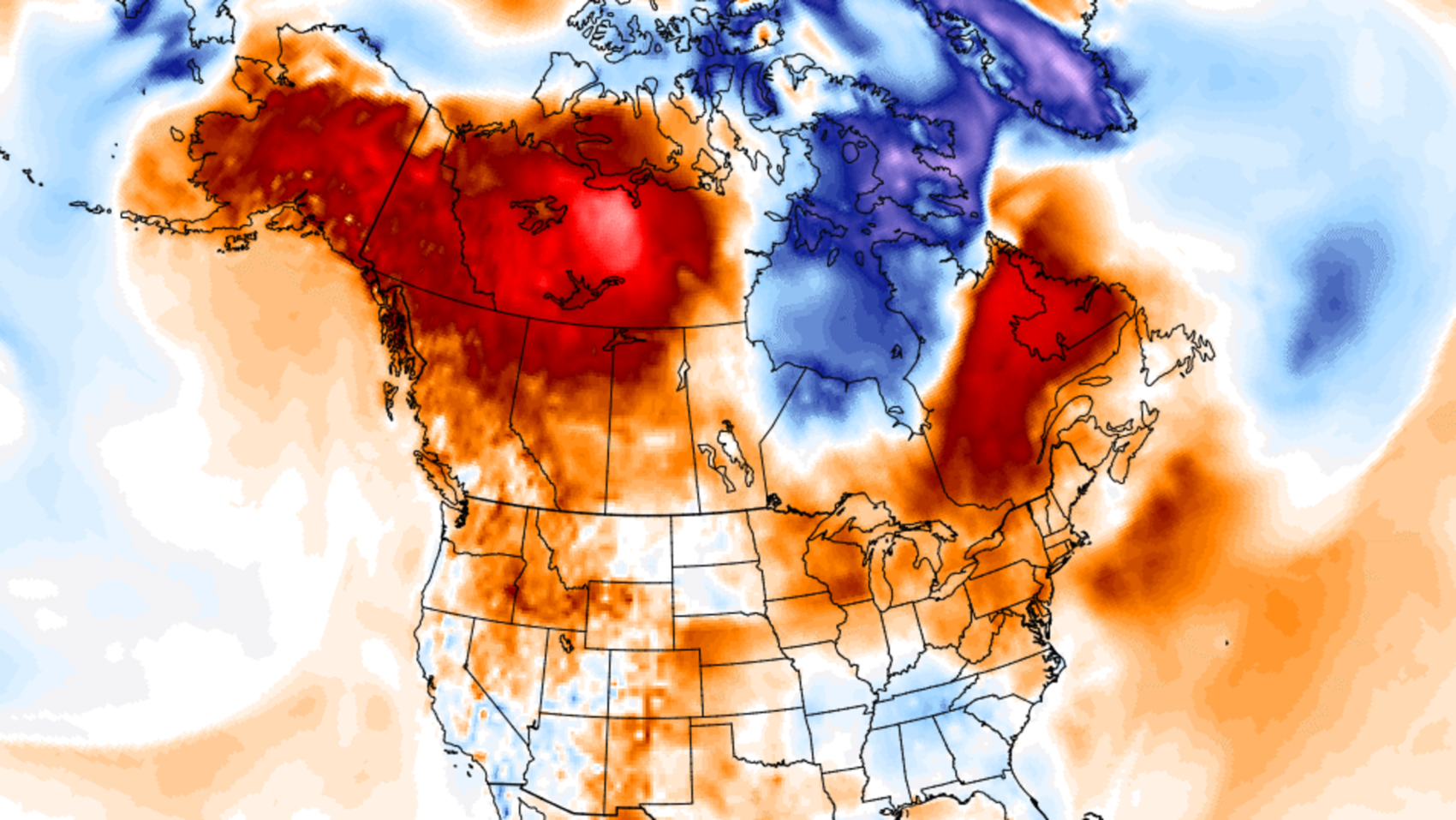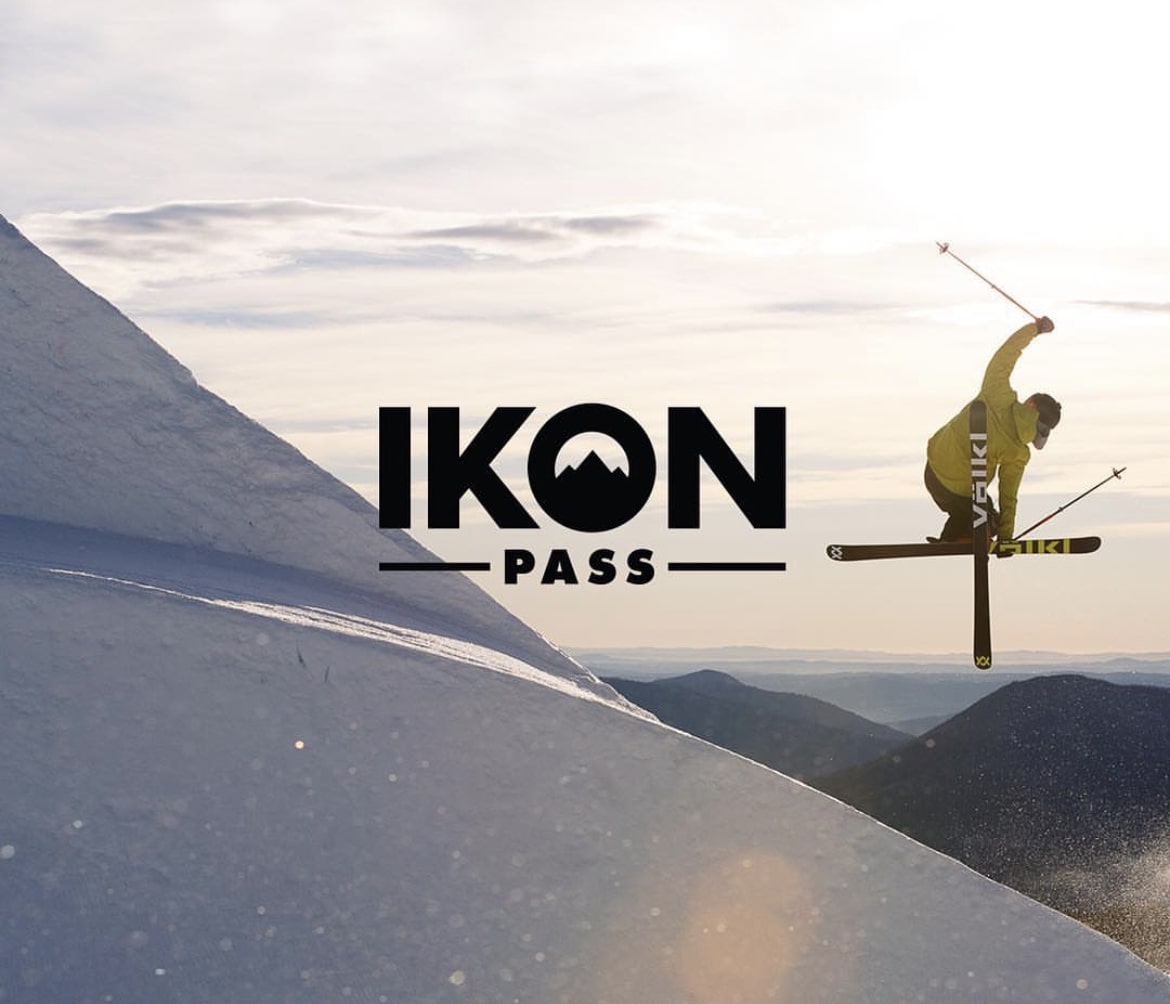Interview with Grand Targhee ski patroller and dog handler Casey O’Connor
After a long day of ski patrolling, Casey O’Connor was kind enough to hop on the phone with me to take a deep dive into his experience and knowledge regarding ski patrol avalanche dogs. Casey currently works at Grand Targhee, WY, with his patrol dog, Mikko. Mikko is a four-year-old yellow Labrador who will be five in March. Casey adopted Mikko when he was eight months old and began patrol dog training immediately. Through training and working together daily, they have become an inseparable duo, always ready to answer the call to action at a moment’s notice.
- Related: Should We Pay Ski Patrollers More?
What exactly do ski patrol dogs do?
Beyond being our furry little mountain friends, ski patrol dogs, also known as avalanche rescue dogs, carry out a vital job. With their strong sense of smell and their instinctive drive to find and capture, patrol dogs are invaluable during avalanche search and rescue missions. Regardless of how tough of a day you’re having on the mountain, seeing a cute patrol pup bounding through the snow will turn your head and make you smile.
Patrol dogs are essential at ski resorts because often, people do not carry avalanche beacons when they are skiing in bounds. Unfortunately, despite rigorous avalanche mitigation practices, avalanches still do happen inbounds. Patrol dogs allow quick assessment of avalanches without witnesses and beacons. Typically, a patrol dog can search 2.5 acres in around 30 minutes, a job that would take a team of people hours to complete. Since speed is everything during an avalanche rescue mission, patrol dogs bring a whole new meaning to the phrase “man’s best friend.”
How effective are patrol dogs? With their keen sense of smell, patrol dogs can smell a victim buried 10-15 feet down. This depth varies depending on the composition of the snow. In lighter snow, smells are better able to move through the snowpack, allowing the patrol dog to smell further down. Patrol dogs aren’t just useful when victims are not carrying avalanche beacons. In many instances, patrol dogs are just as fast or faster at finding victims than experienced professionals using beacons.
How are ski patrol dogs picked?
Ski patrol dogs are selected very young, usually only a couple of months old. One of the first signs of a good patrol dog candidate is their personality. Dogs that want to come to say hi, are curious, and have a lot of energy are great first indications. The main breeds used for patrol dogs include Labradors, Golden Retrievers, German Shepherds, and Border Collies. Sometimes patrol dogs are bred with each other to take advantage of favorable genetic characteristics. However, this is not always the case; any dog with suitable characteristics can become a patrol dog.
What characteristics make a good ski patrol dog?
- Size: Often, patrol dogs are carried to rescue scenes on the patroller’s shoulders, allowing the dogs to reserve their energy for the search. Thus, the dogs must be the right size for safe and easy transport around the mountain.
- Work drive: Patrol dogs must be hard workers who are always ready to go.
- Prey drive: This is the instinctive nature of a dog to find and capture prey. Patrol dogs must have a strong prey drive, which motivates them to find victims buried under the snow.
- Fitness: Patrol dogs must be fit enough to work in cold, rugged, demanding conditions.
- Steadiness: Patrol dogs with high steadiness have a lot of energy and drive but don’t get distracted easily. This allows them to focus on the job regardless of external stimuli. These distractions include other dogs, people, snowmobiles, helicopters, etc.
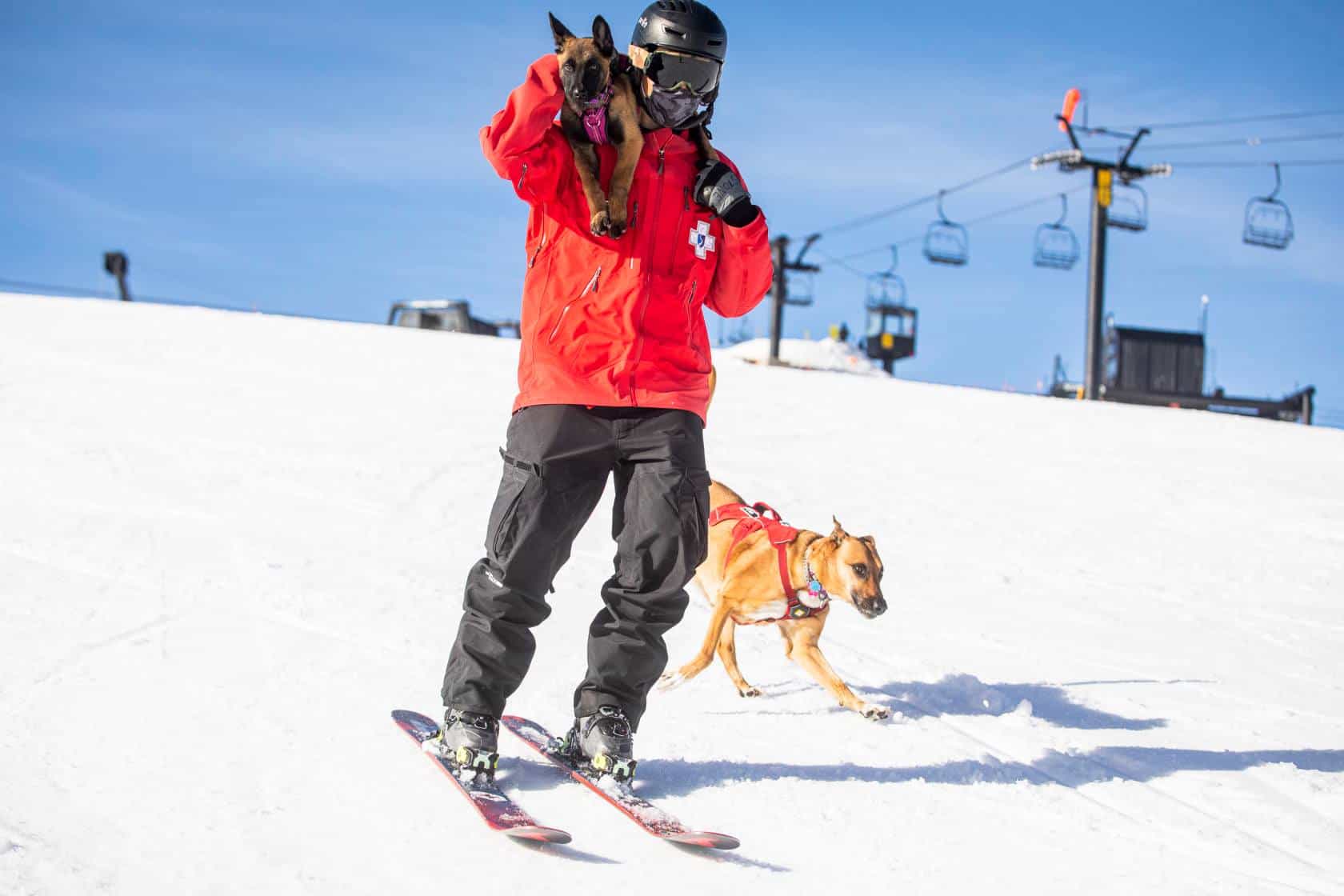
What is the training process like for becoming a patrol dog?
First, the owner must undergo a training process before the dog is even born. This training involves a year as a mentor to experienced patrol dog handlers. During this year, mentees interact with multiple teams and assist in setting up and participating in training exercises.
After a year of training, the patroller is ready to get a puppy and begin at-home training. The first step involves obedience and basic retrieval drills.
Next, the patrol dog in training begins fieldwork. This step of the training process mainly involves getting the dog comfortable working on the mountain. This includes riding up ski lifts, riding on snowmobiles, and practicing obedience and retrieval amidst numerous distractions.
After the dog is comfortable working on the mountain, search training begins. This is the most rigorous step and involves many different exercises that become incrementally more complicated. The first exercise is called a handler runaway. In this exercise, the handler runs away and hides in a snow cave. The patrol dog must wait patiently for a search command and then start searching for the handler. Once the correct snow cave has been located, the dog indicates by beginning to dig. Once the dog is comfortable doing this with the handler, the next step is to do it with someone who is not as familiar. The entrances to the caves are covered, and there are multiple caves. Next, the dog is delayed before they can begin their search, and the hiding spots become less obvious. During this step, the patrol dog also learns how to handle multiple burials. Upon successful recovery, the dog is rewarded with praise and a game of tug of war with a piece of wool.
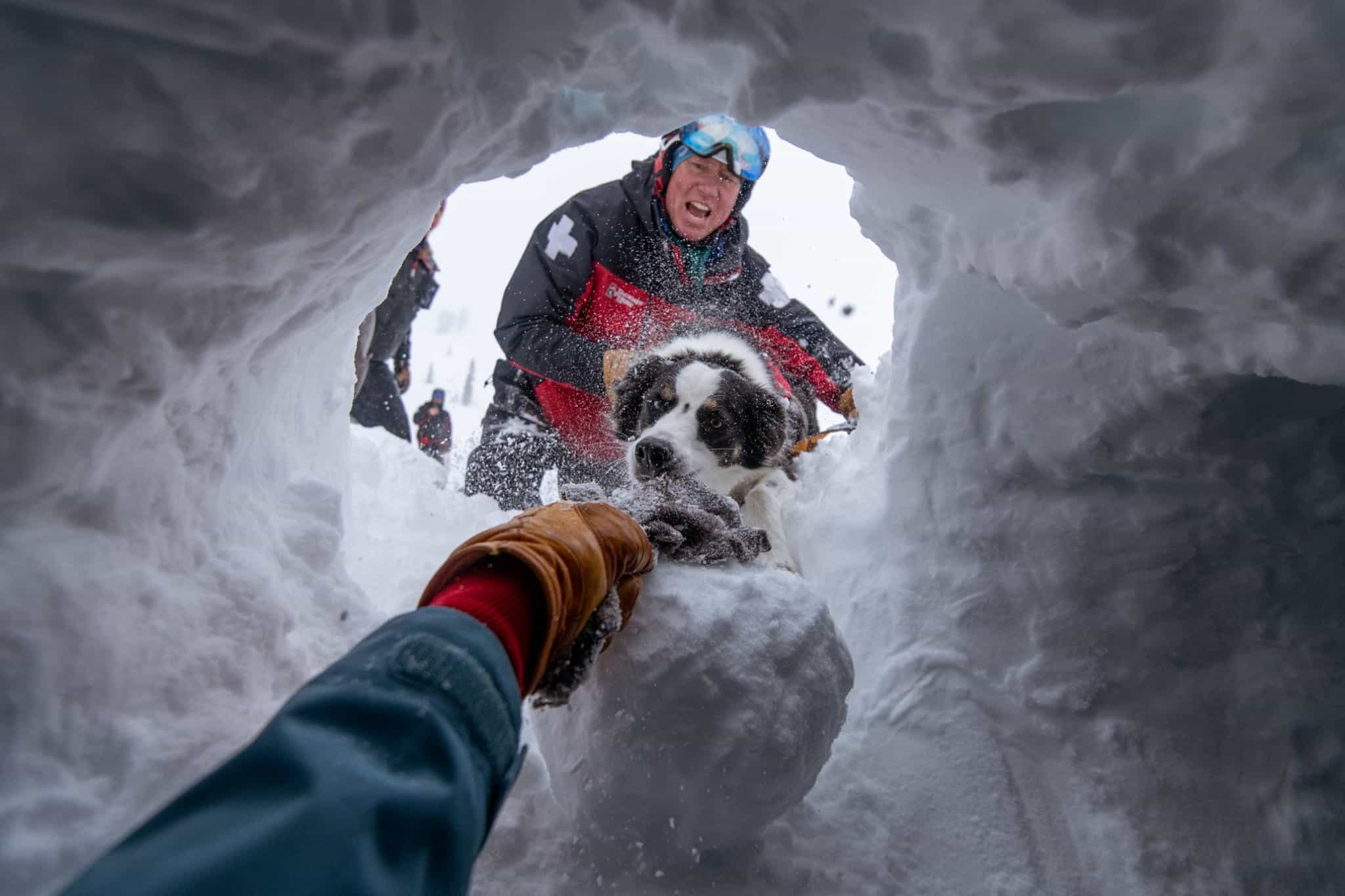
Once the dog has mastered finding people in caves, they move on to shallow grave exercises. These exercises are done with 30” x30” pieces of wool. Wool is the best material because skin cells get onto the wool, and the bacteria create a scent that only lives on wool. Because of this, wool is the best material for practicing deeper burials without actually having to bury someone. The handler sleeps with this piece of wool for three nights before the exercise. Once the piece of wool is ready, it is buried 10-30 inches deep. During this step, patrol dogs learn how to find buried victims and how to prioritize when there are multiple burials. They are trained to go for the most shallow burial first because they have the greatest chance of survival.
After two years of training, the patrol dog is ready for its final test. During this test, the dog must work for a minimum of 45 minutes and uncover three to five articles buried 25-30 inches deep. Other patrollers and handlers evaluate the patroller/dog team based on how far from the buried items the dog is ranging, how well it is searching, and how well the patroller and dog are working together. After two rigorous years of training, most dogs pass this final test and are ready to start their career as a patrol dog!
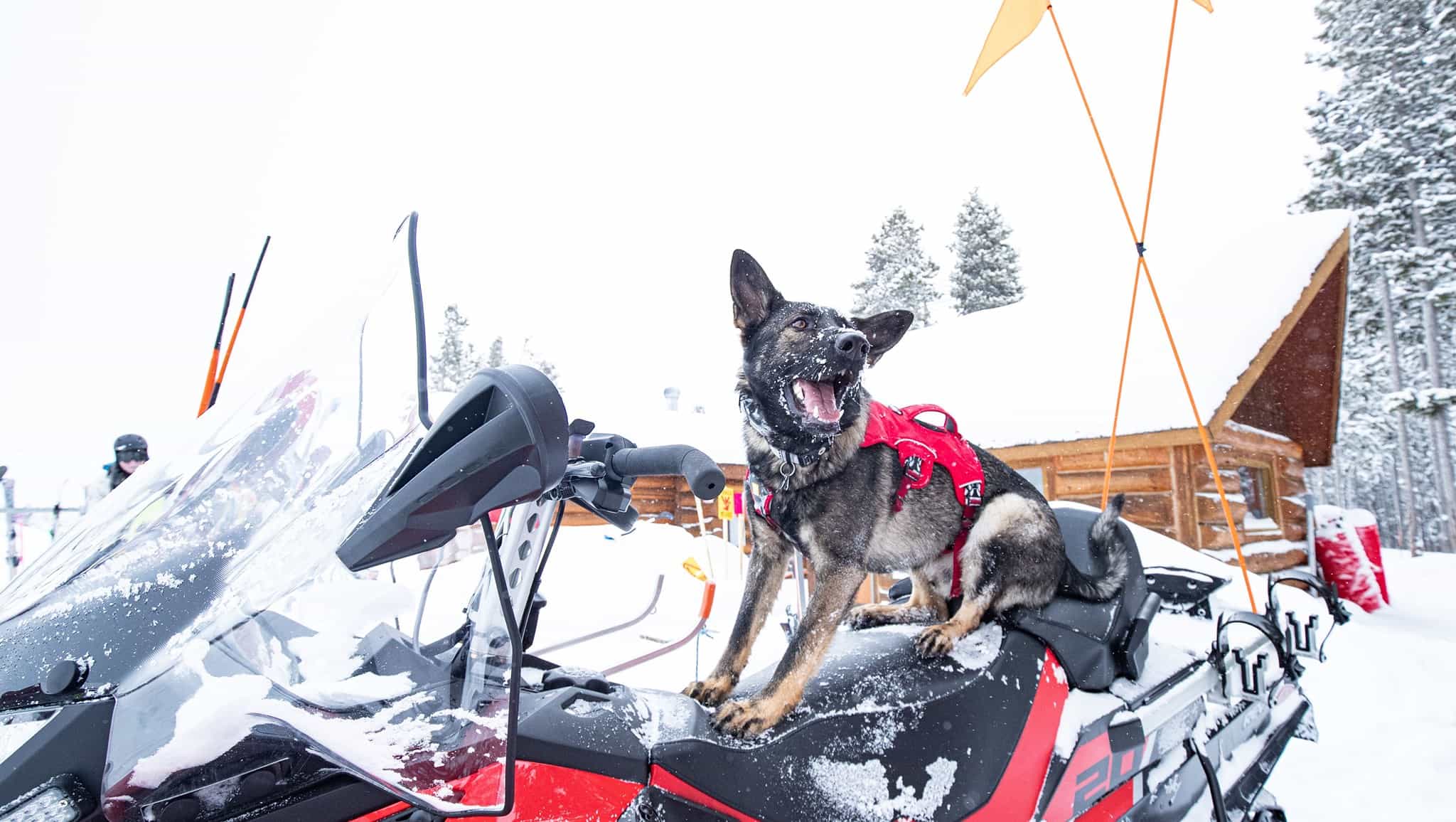
How long does a ski patrol dog’s career last?
Most patrol dogs have between an 8-10 year career. To continue working, they must recertify by passing numerous tests every two years. Because of this, the patroller must regularly practice training exercises with their dog to keep their skill set sharp.
What is a day in the life of a patrol dog like?
Every day is different, keeping the patrol dog excited for work. To many, their job would be considered difficult and demanding, especially when their only payment is praise and games of tug of war. However, patrol dogs are some of the happiest pups around. To them, they aren’t working, simply playing a game with their owner. Their daily life usually involves traveling the mountain to the different patrol stations, responding to search and rescue calls, and doing practice drills.
What do patrol dogs do when they aren’t working at resorts? Outside the resorts, many patrol dogs help search and rescue teams in surrounding forests. This includes both winter and summer rescue missions. While summer jobs don’t usually involve avalanches, because avalanche dogs are trained to locate people, they can easily transition to summer jobs. Like any other dog, patrol dogs also enjoy a healthy amount of outdoor activities, playing with other dogs and spending plenty of time with their owner.
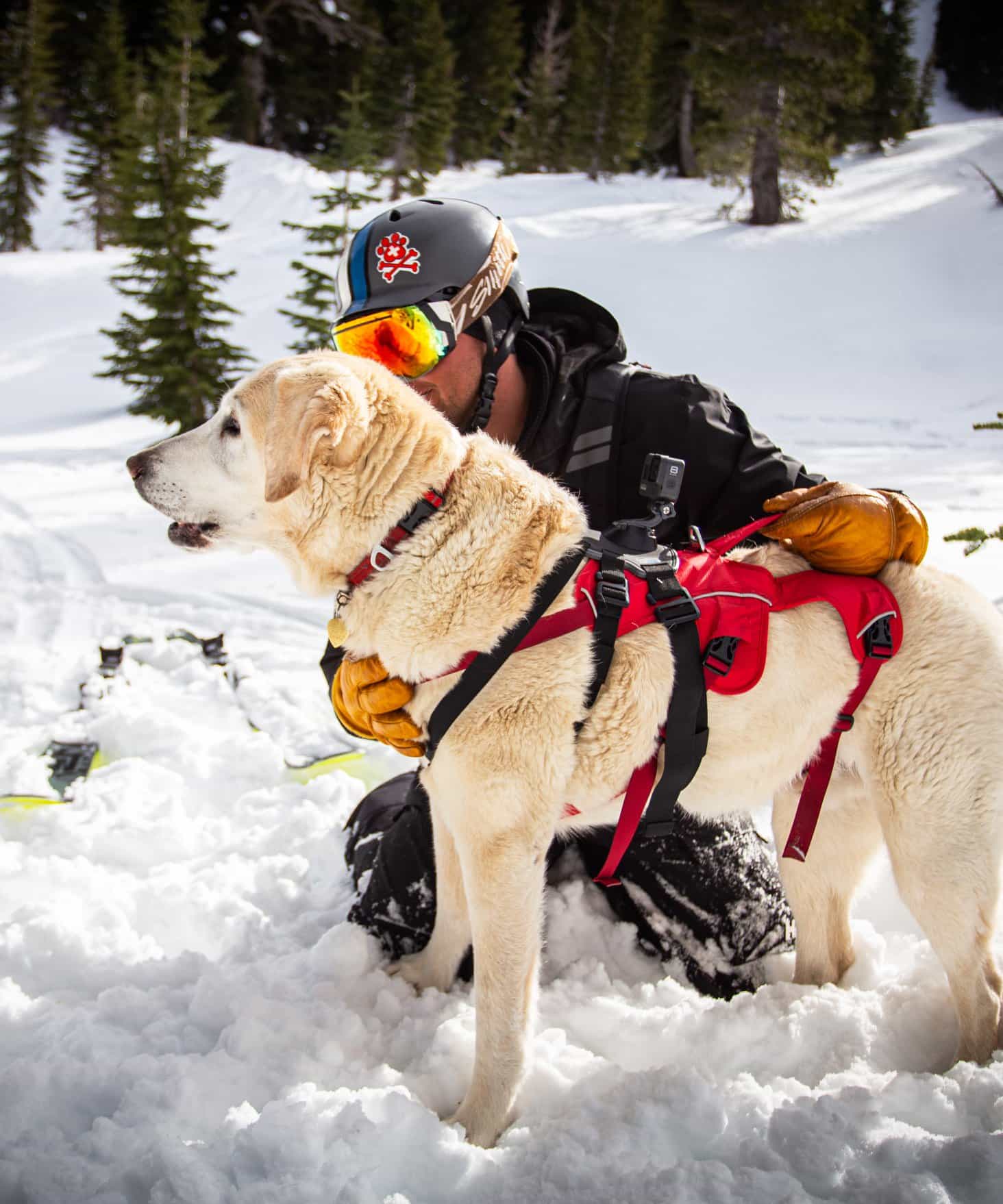
How to interact with patrol dogs on the mountain
Next time you see an irresistibly cute patrol pup, remember that they are there doing a job. Many patrollers are happy to let you pet their dogs but ask first. Do not try to pet them when they are doing practice drills or headed towards an avalanche scene. Additionally, take your skis or snowboard off when petting a patrol dog, as your sharp edges can easily cause career-ending injuries.
Donate to the Grand Targhee Avalanche Dogs
If you enjoyed reading this article, please consider donating to the Grand Targhee Avalanche Dogs Program (link below). The information in this article was obtained through an interview with Grand Targhee patroller Casey O’Connor and his pup Mikko. There are currently five patrol dogs in the program who need financial support to help pay for food, training, insurance, and travel expenses. Training and caring for an avalanche dog is extremely expensive, and donations are necessary to keep these programs alive.
